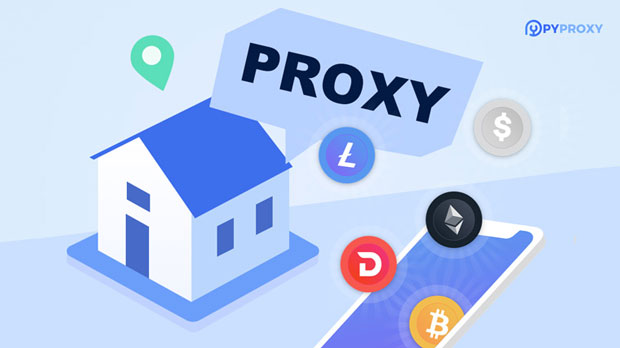In today's digital landscape, the demand for dedicated proxy services has surged as businesses and individuals look for enhanced security, privacy, and performance. Dedicated proxies offer exclusive access to IP addresses, which is critical for activities such as web scraping, managing multiple social media accounts, or bypassing geo-restrictions. Some of the most reputable brands providing these services include renowned names like Luminati, Smartproxy, and Oxylabs, each offering unique features to cater to varying customer needs. This article delves into the top brands offering dedicated proxy services, their key features, and how they stand out in the competitive market. Understanding Dedicated Proxy ServicesDedicated proxy services are private proxies assigned to a single user or business entity. Unlike shared proxies, where multiple users share the same IP address, dedicated proxies offer exclusive use of the IP, ensuring better performance and security. These proxies are particularly useful for sensitive activities such as browsing competitors' websites, data gathering, or maintaining anonymity while online. The main advantages of dedicated proxies include:1. Speed and Reliability: Dedicated proxies are faster and more reliable because they aren't shared with other users, leading to less congestion and faster response times.2. Security: Since the IP is exclusive to the user, there’s a reduced risk of malicious activities or IP blacklisting, which can happen with shared proxies.3. Anonymity: Dedicated proxies help maintain a high level of anonymity, which is crucial for activities like market research or secure web browsing.Key Players in the Dedicated Proxy MarketSeveral companies dominate the dedicated proxy service market. These brands have developed strong reputations due to their reliability, quality of service, and extensive features. Let’s take a deeper look at some of the most popular ones.1. Luminati (now Bright Data)Luminati, now known as Bright Data, is one of the most recognized names in the proxy industry. It offers a wide range of proxy services, including residential, data center, and mobile proxies. Bright Data is known for its high-quality, reliable, and fast dedicated proxies. Some key features include:- Large Proxy Network: Bright Data boasts a network of over 72 million residential IPs worldwide, making it one of the largest providers of dedicated proxy services.- Advanced Features: It provides various tools such as real-time proxy monitoring, detailed analytics, and geolocation targeting to help businesses optimize their proxy usage.- Customization: Users can customize their proxy setup to fit specific needs, whether for web scraping, ad verification, or market research.2. SmartproxySmartproxy is another highly popular dedicated proxy provider, offering affordable and flexible solutions for both individuals and businesses. Their services cater to a wide range of activities, from social media management to competitive intelligence gathering. Key features of Smartproxy include:- Global Proxy Pool: With access to over 40 million residential IPs across the globe, Smartproxy ensures an extensive and diverse range of IPs for dedicated proxy services.- User-Friendly Interface: Smartproxy provides an easy-to-use platform, making it ideal for beginners and advanced users alike.- Affordable Pricing: Smartproxy offers competitive pricing without compromising on service quality, making it a top choice for those seeking reliable yet cost-effective solutions.3. OxylabsOxylabs is known for its premium, high-performance proxy services. It’s a go-to option for businesses requiring large-scale proxy solutions. Oxylabs focuses on providing dedicated proxies with unmatched speed and reliability. Key features include:- Extensive Proxy Network: Oxylabs has a network of over 100 million residential IPs, which ensures excellent coverage and minimal downtime.- High-Speed Connections: Oxylabs is renowned for its fast and reliable connections, which is critical for tasks such as web scraping or running automated bots.- Enterprise Solutions: They offer tailored packages for large businesses, including advanced features like dedicated customer support, proxy rotation, and IP targeting.4. GeoSurfGeoSurf is another prominent player in the dedicated proxy space. It focuses on providing high-quality proxy services, particularly for businesses that need IP addresses from specific locations. Key features include:- Geo-Targeting: GeoSurf specializes in offering dedicated proxies from various countries and regions, making it ideal for businesses conducting localized market research or testing.- Premium Service: GeoSurf is known for its premium service, offering high-speed, stable connections with excellent customer support.- Targeted Solutions: The platform provides a range of specialized solutions for web scraping, ad verification, and SEO monitoring.5. Storm ProxiesStorm Proxies is a well-regarded provider of affordable and reliable dedicated proxy services, especially popular among individuals and small businesses. Key features include:- Affordable Pricing: Storm Proxies offers some of the most cost-effective pricing for dedicated proxies, making it a great option for those on a budget.- rotating proxies: While their focus is primarily on dedicated proxies, they also offer rotating proxies for users who need additional flexibility.- Simple Interface: The platform is designed to be easy to use, allowing users to set up and manage their proxy services with minimal hassle.How to Choose the Right Dedicated Proxy ServiceChoosing the right dedicated proxy service largely depends on your specific needs. Here are a few factors to consider when selecting a proxy provider:1. Use Case: Consider what you need the proxy for. Is it for secure web browsing, scraping, or managing multiple accounts? The provider’s offerings should match your requirements.2. Pricing: Different providers offer varying pricing models. Ensure you choose one that fits your budget while still providing the quality of service you need.3. Geographical Coverage: If your work requires IP addresses from specific countries, make sure the provider offers coverage in those regions.4. Support: A provider with responsive customer support can be invaluable, especially if you encounter any issues or need help with setup.The demand for dedicated proxy services continues to grow as businesses and individuals seek better security, privacy, and performance online. Brands like Bright Data, Smartproxy, Oxylabs, GeoSurf, and Storm Proxies lead the market by offering high-quality, reliable services that cater to a wide range of needs. By considering factors such as use case, pricing, geographical coverage, and support, users can select the best provider to meet their specific needs, ensuring a smooth and secure online experience.
May 22, 2025



































































